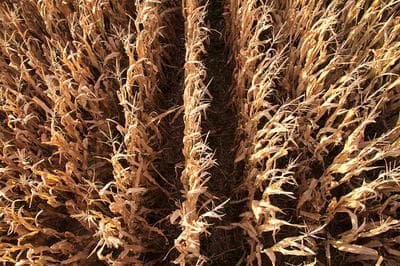Advertisement
What Farm Products Does Iowa Sell China?
Resume
The world's media is descending on Iowa as Xi Jinping, the man expected to become the next president of China, pays a visit to Muscatine, population 23,000, the farm town Mr. Xi first visited on an agricultural trade mission in 1985.
China is the world's largest agricultural producer and consumer, and U.S. agricultural exports to China have surged in the past few years, with many states benefiting, including Iowa.
Virgil Schmitt, a field agronomist at Iowa State University told Here & Now's Robin Young that China buys $7 billion worth of products a year from Iowa.
Corn, Pork And Soy
"The Chinese people are becoming more affluent, they are demanding more and better quality products and we are able to supply those to them."
Virgil Schmitt, field agronomist
"We export about a third of the products we produce here, and of that China consumes about 15 percent of that... China is our largest customer," he said.
Half of what Iowa sells to China is soybeans, a quarter is corn, and a quarter is pork and beef products, according to Schmitt.
In fact, the U.S. has seen a 50 percent increase in Chinese corn purchases since 2010.
"The Chinese people are becoming more affluent, they are demanding more and better quality products, and we are able to supply those to them" Schmitt says.
How Are Farmers Responding?
Iowa is the number one corn, soybean and pork producing state in the country, and to respond to Chinese demand, they've had to devote more of their land to soybeans and corn, at the expense, Schmitt says, of hay and pasture fields.
Is Chinese Demand Pushing Up Prices?
Iowa State agricultural economist Chad Hart says farmers like this trade because prices go up as demand increases (assuming the supply stays the same). But that also means that Americans are paying higher prices, but Schmitt says that the cost is miniscule.
"If we look at the value of the corn in a box of corn flakes, that probably translates to about one cent, as our markets go up. Because the vast majority of the cost in that box of corn flakes is in the processing and packaging and shipping," he said.
Guest:
- Virgil Schmitt, a Muscatine native and field agronomist at Iowa State University
This segment aired on February 14, 2012.